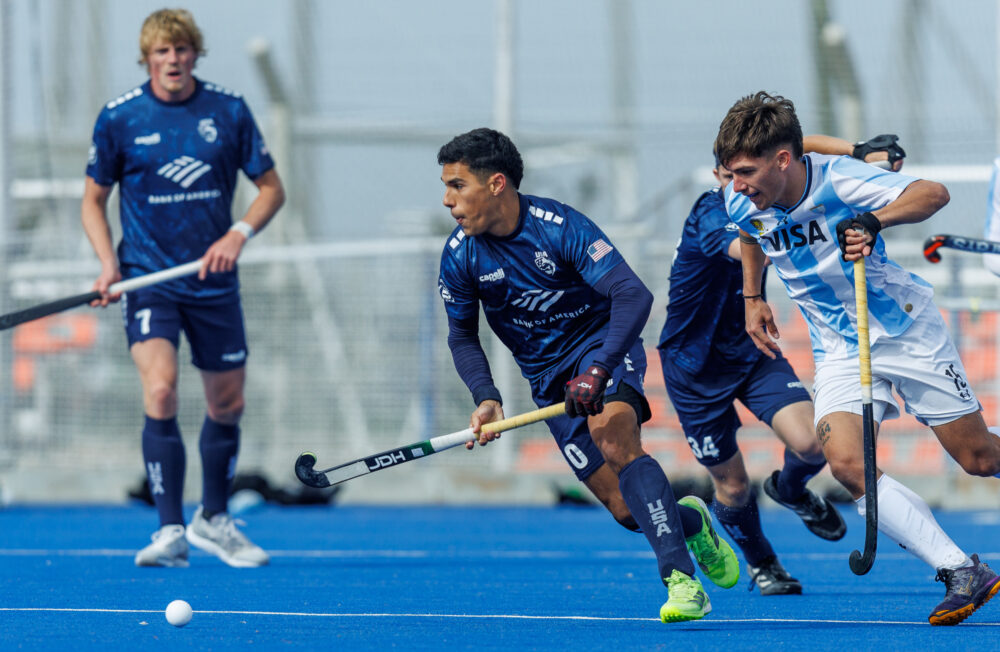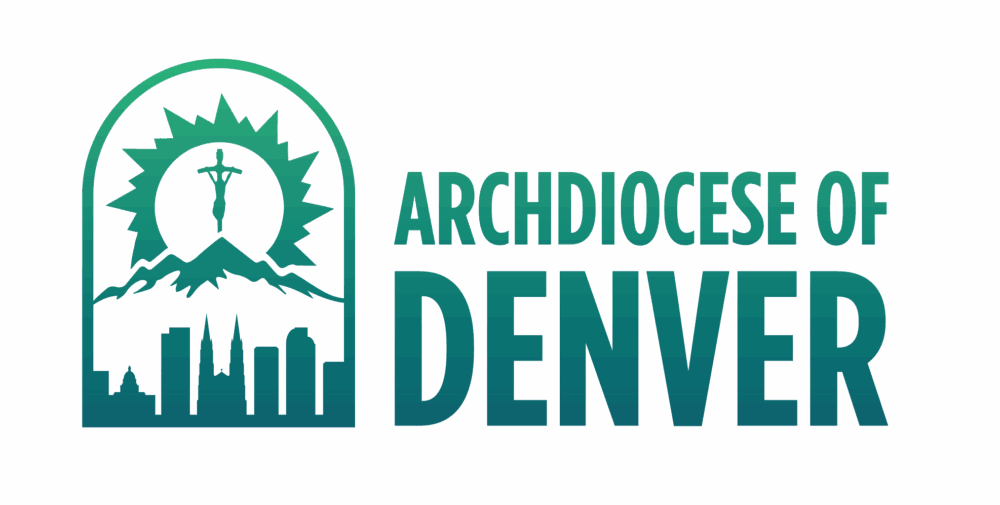Share
Texas Tech Overhauled Creative Ops to Unlock the Red Raider Story
With PhotoShelter, Texas Tech stores everything in one place – saving them time, simplifying collaboration, and speeding up photo delivery.
- 2.5k+ assets housed in PhotoShelter
- 190+ invited users on PhotoShelter
- 1.04M+ total followers across social media channels
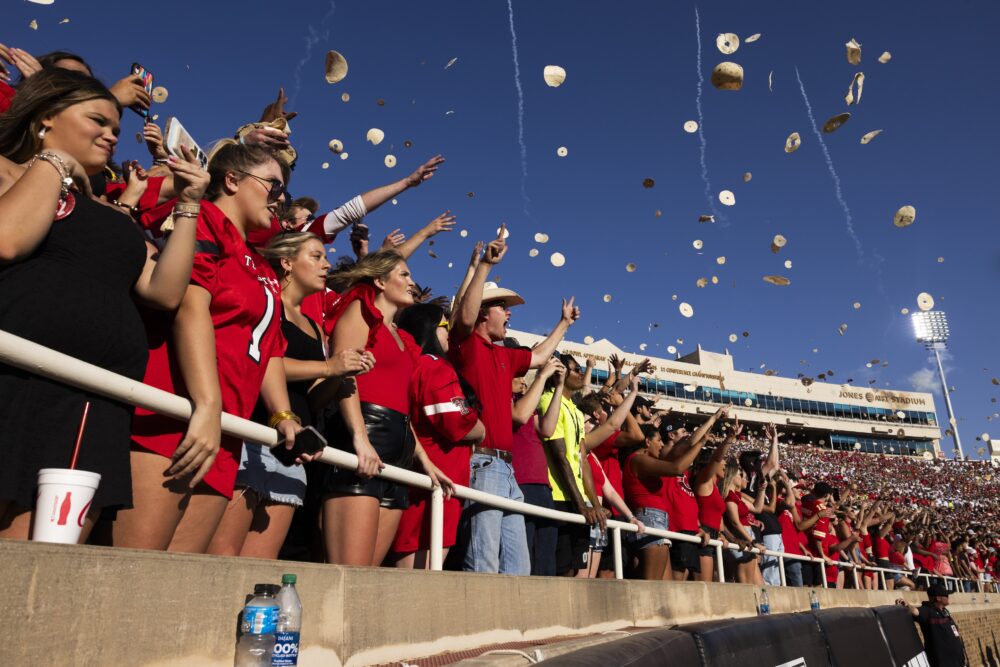
A story in every photo, A bottleneck in every request
Texas Tech University is a comprehensive public research university providing the highest standards of excellence in higher education. Telling the university’s story through photos is key to connecting with its community. However, the photo team’s old, disorganized system for managing and sharing images made their work difficult. They struggled with a mix of outdated tools that created bottlenecks and kept them from quickly getting photos to the people who needed them.
The challenge: Old-school system failing modern team’s needs
Ashley Rodgers, Director of Photo Storytelling, and Justin Rex, Assistant Director, lead the team that captures the university’s story through photos. Their workflow was slowed down by a mix of outdated websites, personal cloud drives, and limited sharing tools. This system made it hard to find photos, track who used them, and get them to people quickly.
Here are the key problems they faced:
- Asset storage was disorganized and outdated. The team used a mix of OneDrive links and an old internal website that was hard to manage. Ashley said she eventually “quit updating it” because it “looked terrible, and there were so many things wrong.” As a result, new and important photos were not being used.
- Usage tracking was impossible. “I really didn’t even know how many people were using it, because there was no tracking, nothing,” Ashley said. The team had no idea who was downloading photos, why they needed them, or how often they were accessed.
- Working remotely was difficult. Their large on-campus servers were hard to access. Ashley had to use her “own personal OneDrive as a storage dump,” which she knew wasn’t a good long-term answer.
- An older sharing tool caused more work. They used Brandfolder, but its limitations meant the team still had to handle most photo requests manually. Justin explained, “We were still having to fulfill requests ourselves by customizing a OneDrive folder or spinning up some other solution.”
“I remember when I started here, we had Brandfolder to distribute files, but due to how their permissions worked, we had a very limited selection of what was on there. Now, it’s easier on us because we don’t have to go and find things for people. We can have more on PhotoShelter than we ever could on Brandfolder just because of how it’s all laid out.”
Justin Rex, Assistant Director of Photo Storytelling, Texas Tech University
The solution: A modern playbook for instant, on-demand visuals
The photo team used to spend hours searching for photos and manually sending them out. After switching to PhotoShelter, they now have one easy-to-use place for all their assets. This new system helps both the photo team and the university staff who need their photos, freeing up time to focus on creating great work.
Here’s how things work now:
- University staff can now easily find photos themselves. PhotoShelter works with the university’s single sign-on (SSO) system, so staff can log in with their normal credentials to access and download files. It completely removes the need for the photo team to set up new accounts or manage extra passwords.
- Requesting and approving photos is much faster. Other university departments can create a Workspace, select the images they need, and send them to the photo team for approval. Justin called it “a more streamlined process and a faster delivery method than a general photo request.”
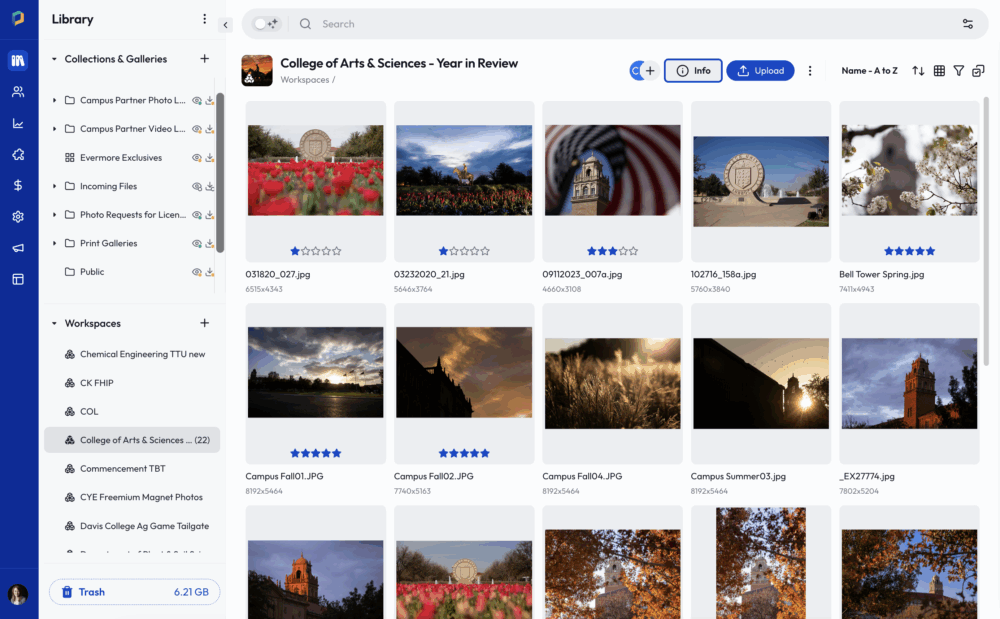
- Working with outside partners is smoother. Unlike sending a OneDrive folder, PhotoShelter lets them control exactly what the agency can see and do with the images. “PhotoShelter has allowed us to distribute photos directly to them, but also limit access, when necessary,” Justin said. Setting permissions is key, especially for images that can’t be released yet. This level of control prevents someone from finding a photo on a server and deciding “to put it on a billboard without asking anybody.”
- They can deliver event photos in real-time. The team can hire a freelance photographer for an event and have them upload photos directly into a PhotoShelter gallery using FTP. During their vet school’s first graduation, this allowed marketing teams to get photos instantly while the main photo team was busy, and the process “worked flawlessly,” according to Justin.
- A new storefront creates a way to sell prints. The team created a public gallery where anyone can order prints of their photos. University departments also use this feature to purchase images for their office spaces.
“Over the last few years, Texas Tech opened the second vet school in Texas. And this past May was the first graduating class. Due to our schedules, we already had conflicts, and so we weren’t going to be able to cover it ourselves. So there was a need to hire a freelancer to cover the commencement. We needed the photos to be distributed very quickly, amongst several different parties, so we hired someone who was very familiar with PhotoShelter’s upload and FTP process.
I set up a dedicated vet school commencement folder and had her FTP upload go directly in there. Then we gave download access to the people that were going to need it in the immediate future while we were unable to distribute stuff ourselves. So we basically used PhotoShelter as an upload point for the photographer, and then a distribution chain for our social media people at the main campus and the marketing team over at the vet school as well. And it worked flawlessly.”
Justin Rex, Assistant Director of Photo Storytelling, Texas Tech University
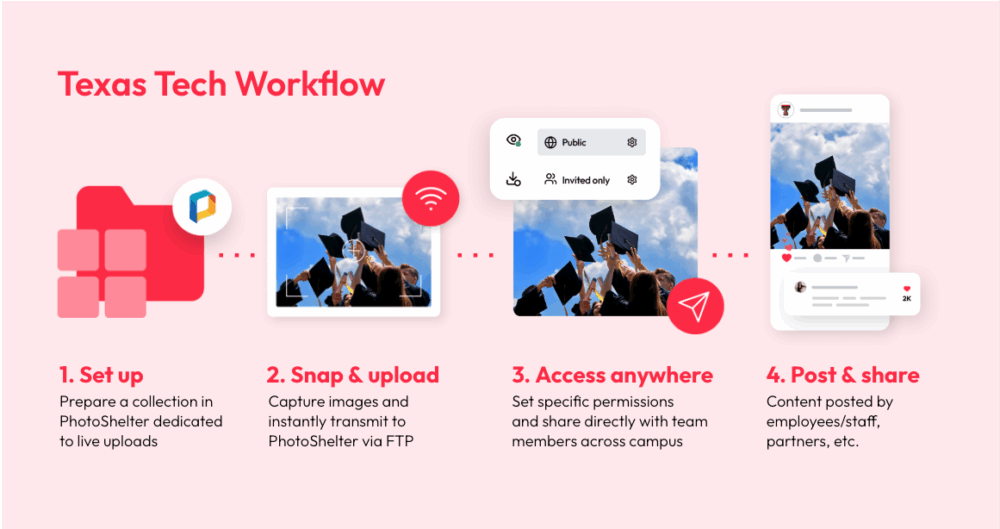
A workflow worthy of a tier one university
By switching to one central platform, the Texas Tech photo team fixed the problems that slowed them down. They now have more control over their photos and have made it easy for campus staff and outside partners to get the images they need. Best of all, they got their time back.
“PhotoShelter makes our lives easier. I don’t have to sit at my computer and work on things as hard or as long. I can actually get out and do my job faster… Two years ago, if I had gotten requests from different departments, I would have taken an hour or two to put it together. Now, it’s probably 10 minutes altogether.”
Justin Rex, Assistant Director of Photo Storytelling, Texas Tech University

